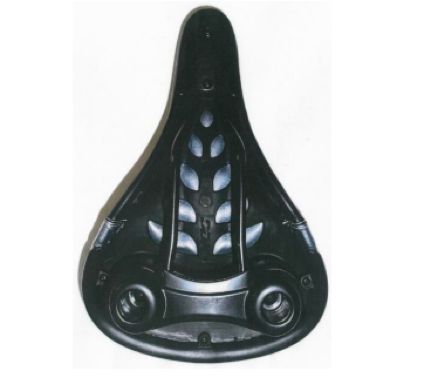Background
On 3 November 2011 Monz Handelsgesellschaft International mbH & Co. KG ("Monz") registered a design with the German Patent and Trade Mark Office, (DPMA) for an underside of a saddle for bicycles or motorbikes (Design No. 40 2011 004 383-0001) with the following single representation:

On 27 July 2016, Büchel GmbH & Co. Fahrzeugtechnik KG ("Büchel") filed for a declaration of invalidity of the design registration, claiming that the design lacked novelty and individual character under Articles 3(3) and (4) of EU Directive 98/71/EC, which specify the conditions that have to be met to obtain protection of a component part of a complex product.
EU Directive 98/71/EC
Article 1 of the EU Directive 98/71/EC, which was issued on 13 October 1998, defines a "complex product" as a product which is composed of multiple components which can be replaced permitting disassembly and reassembly of the product.
Article 3(3) of the Directive specifies that a component part of a "complex product" is only considered novel, and to have individual character:
- if the component part, once it has been incorporated into the complex product, remains visible during normal use of the latter, and
- to the extent that those visible features of the component part fulfil in themselves the requirements as to novelty and individual character.
Article 4 of the Directive defines "normal use" as meaning use by an end user, excluding maintenance, servicing or repair work.
Lost in translation
At the first instance, the DPMA rejected Büchel's request for a declaration of invalidity, interpreting the term "normal use" broadly. In particular, they stated that "normal use" would include dismantling the saddle by the rider when parking the bicycle outside to prevent the saddle being stolen. Consequently, the underside of the saddle would be visible to the end user during "normal use".
During an appeal by Büchel however, the German Federal Patent Court overturned the DPMA's decisionhighlighting that the German version of Directive 98/71 uses the phrase "bestimmungsgemäße Verwendung", which translates to "intended use" rather than "normal use". The Court held that while the removal of the saddle to prevent it being stolen may comprise "normal use" of the bicycle, it does not form part of its "intended use". When being used as intended, the saddle will be in place, attached to the bicycle so that an end user can ride the bike. In that scenario the underside is not visible, and thus it is not afforded design protection under the German version of Directive 98/71.
The German version of Directive 98/71 as it stands therefore appears to provide a somewhat narrower scope of protection than both the English and French versions of the Directive, which use the terms "normal use" and "utilization normale" respectively. The result - a lack of harmonisation of the Directive across EU states.
Monz has now appealed the decision with the Federal Court of Justice, who has in turn referred two questions to the CJEU. Firstly, does the component product have to be visible during normal use or can it be visible in abstracto? And secondly does "normal use" only include using the product with respect to its principal function?
Decision
We now eagerly await the decision of the CJEU on this matter, however the opinion of the Advocate General (AG) provides an indication of the direction the Court may go. In his Opinion the AG stated that a component part of a complex product must be visible when in "normal use", and not in abstract. They also opined that "normal use" of a complex product should not be limited to the principal function for which it is intended, highlighting that "normal use" could reasonably include cleaning a product, or eliminating minor problems such as removing paper from a jammed printer.
Comment
The AG's opinion that a component part of a complex product must be visible when in "normal use", and not in abstract, is unsurprising and in line with the purpose of Article 3(3), which was introduced by the EU to prevent monopolies in spare parts markets.
The AG's opinion on what defines "normal use" is more interesting, and should the CJEU follow the AG, it will potentially broaden the term "normal use" further than is even intended in the English and French versions of the Directive.
For example, will the appearance of components which are visible when an end user opens up a printer to remove a paper jam now receive protection? What about components in a car engine visible to an end user when they open the bonnet to refill the oil?
In T-10/08, the underside of a combustion engine intended for use in a lawnmower was ignored when assessing its novelty and individual character as it was not visible whilst mowing a lawn. However, in future perhaps the underside won't be ignored if it can be argued that "normal use" includes an end user removing simple blockages in the underside of the lawnmower caused by a build-up of grass when mowing a lawn?
One thing is for sure: if the CJEU follows the AG's opinion, Articles 3(3) and 4 will only apply to a very limited range of scenarios, and an increase in design registrations for component parts of complex products could be expected.
The content of this article is intended to provide a general guide to the subject matter. Specialist advice should be sought about your specific circumstances.
We operate a free-to-view policy, asking only that you register in order to read all of our content. Please login or register to view the rest of this article.


